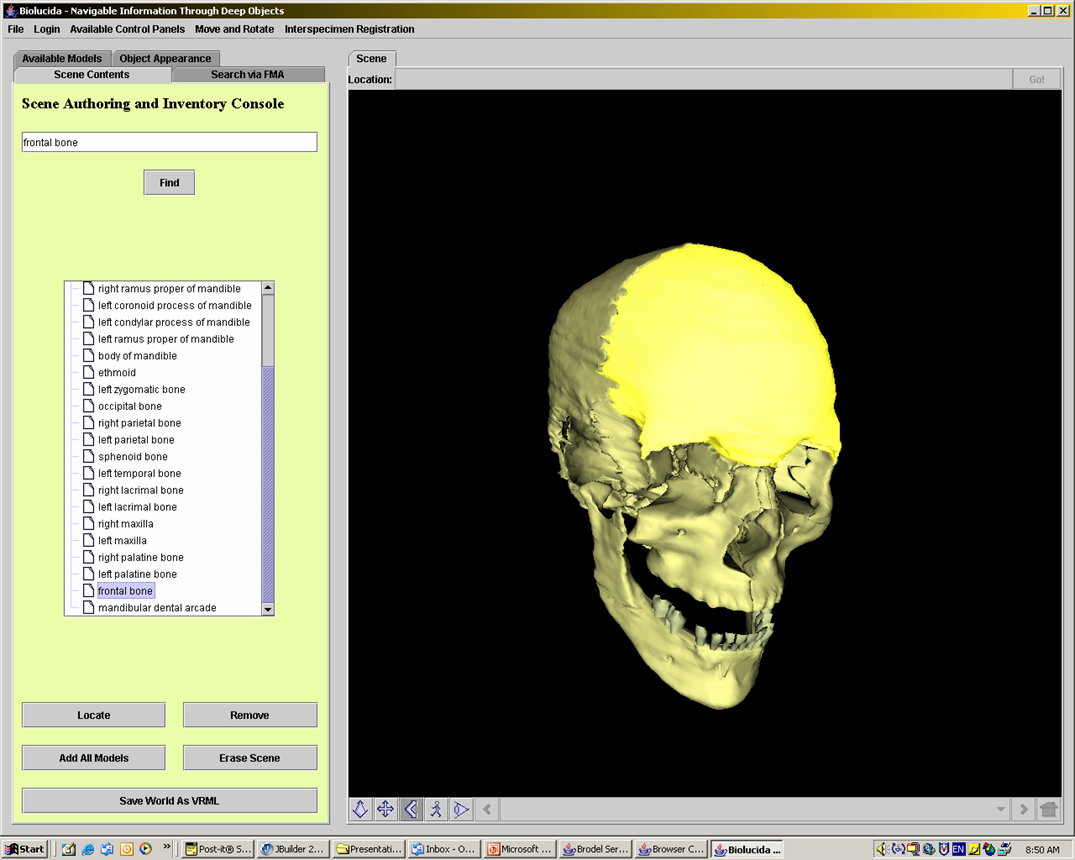Three-dimensional visualization of human
anatomy is an effective way of describing appearances and spatial
relationships within the human body. It is also a potentially powerful
method of integrating and describing biomedical research data which can
be related to anatomical entities. Toward this end, a computer-based
dynamic scene generation system, named Biolucida, has been created
which constructs interactive three-dimensional scenes of human anatomy.
Biolucida allows the construction of scenes built from a collection of
user-selected anatomical structures. The original driving concept
behind its design is for use as an education and communication tool,
conveying lessons, results, and other concepts via 3D animation. An
exploratory goal of this system is to serve as the framework for the
visualization of biomedical data which relates directly to the scene
generator’s rendered structures. Mapping microarray
expression data of various genes onto a physical map of human anatomy
is one such application. Querying microarray gene expression data from
human tissue samples should be able to yield an identity, expression
level, and biological source (anatomical structure), if that data is
archived according to appropriate standards. Using this data to help
illustrate an anatomical scene may give users an appreciation for
patterns not easily see without the help of such visualization.
Example Interactive VRML files generated with Biolucida, using the
Foundational Model of Anatomy, and 3-D models generated by John
Sundsten and David Conley. Best viewed with the
Blaxuun Contact 5 VRML
viewer. Note that the Blaxxun viewer currently doesn't work properly if
a WRL file is in a directory with blanks in the names. A solution on a
Windows machine is to right click on the links below and save in in a
directory called something like C:\WRL. Then open with Blaxuun Contact.

